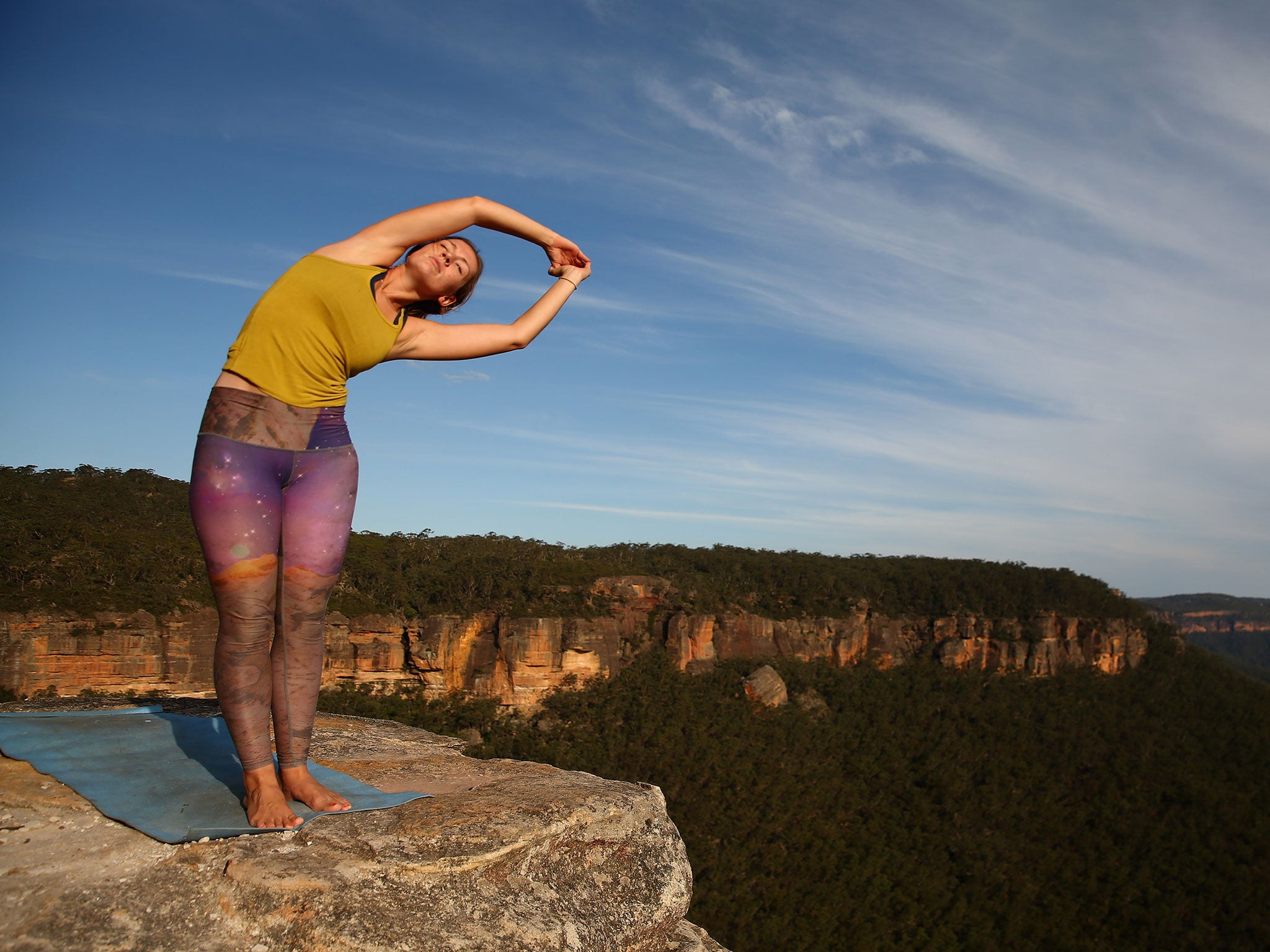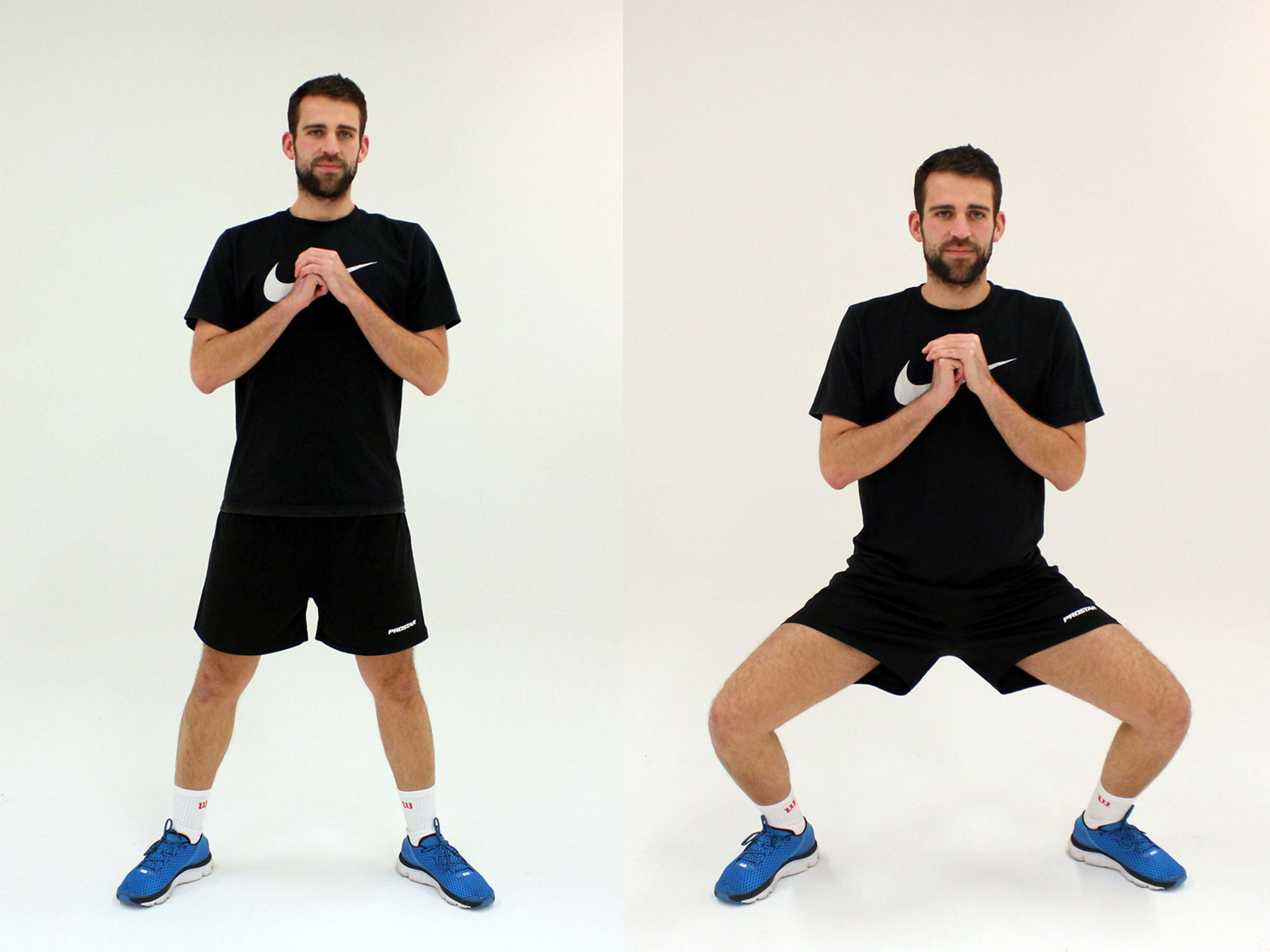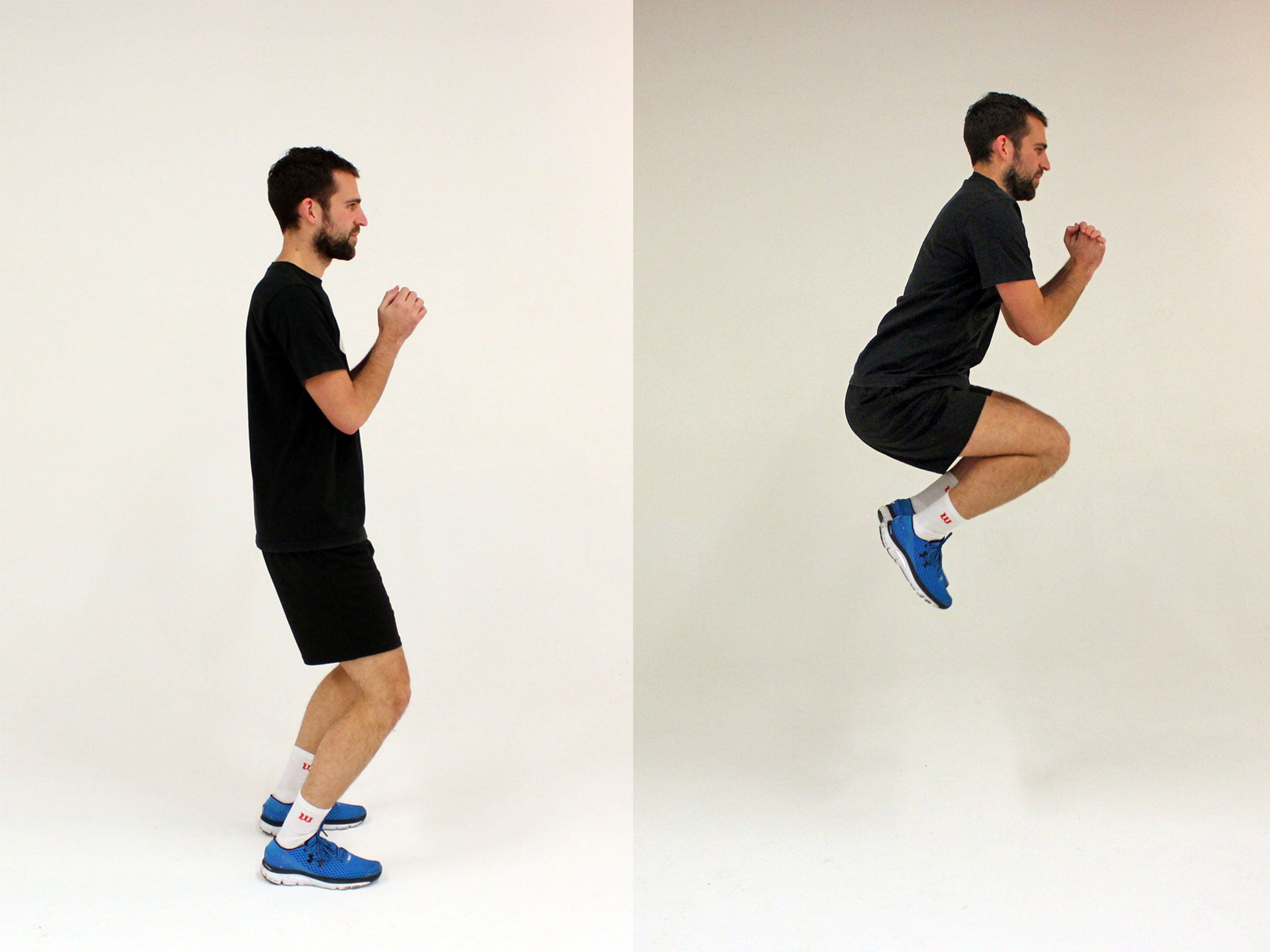Simple exercises to help you get fit in the New Year
Follow these 8 basic moves to see your fitness improve past mid-January...

For many of us, the new year is the perfect chance to improve our health and fitness after the indulgences of the festive season - but the majority of people are give up on their resolutions despite good intentions on 1 January.
A key mistake is setting the bar too high when it comes to exercising, with tough workouts putting off sedentary beginners.
Instead, people should start off slowly when adopting new exercise regimes and make sure activities become part of a routine, says Dr Stephen Mears, a lecturer in Sports Nutrition and Exercise Physiology at Loughborough University.
"What you don’t want to do is jump in at the deep end and put yourself under too much stress, especially if you have been sedentary for quite a while. Exercise is a shock to the system, so if you haven’t done it in a while you’ll feel unfit, lethargic and tired."
"As you gradually build up and build up your body becomes more accustomed to the exercise, your body becomes more efficient so the processes within the body, so the transport of oxygen to the muscles increases and improves."
An avid runner, Dr Mears admits that he himself finds it hard to start when he has been inactive for a long period of time. "First runs can feel difficult and make you not want to go out again, but know that won’t last forever and eventually that will become easier."
Citing the American College of Sports Medicine, he adds that people should build up to complete at least 150 minutes of moderate intensity cardio respiratory exercise a week, spilt into three to five sessions a week of between 30 to 60 minutes.
And exercising doesn't have to take place in the gym.
"It can be walking the dog or going to a dance class. As long as it’s raising the heart rate and putting a bit of stress on the body then it will have some sort of benefit," says Dr Mears
As as for changes to diet, his advise is simple. "Try to eat natural foods rather than processed foods. It’s about getting sufficient fuel to match your body’s energy demands."
Now you're ready to get started, below are eight simple exercise you can do at home put together by personal trainer and professional bodybuilding athlete Hayley Madigan.
The exercises can be completed in two ways:
1) Complete each movement as many times in 45 seconds and rest for 20 seconds before moving on.
or
2) Carry out each exercise for 12 to 15 repetitions in 2 sets, resting for 30 seconds between. As the exercises become easier, you can increase the number of repetitions and sets.
Sumo Squats

Stand with your legs wide apart. Keeping your heels on the floor and arms close to your body, squat down allowing your knees to turn out and inner thighs to feel the contraction. Looking up to the sky can help align your body and keep you straight. Be careful to keep your knees in line with your feet.
Don’t: Let your knees go over your toes.
Expert Level: When this exercise gets too easy you can do the same movement whilst holding a weight in your hands or holding a kettlebell, and letting it drop in between your legs.
Additionally, you can make this even more effective by standing on two benches (one foot on each either side) and squatting down with the weight in the middle, which will enable you increase your range of motion.
Mountain Climber Twists

Start in a press up position and bring one knee in towards your opposite elbow and twist your torso in to feel your side and lower abs contract. Alternate your knees making sure the resting leg is securely straight and on tip toes.
This movement requires you to hold your core very tight at the same time as twisting your torso. Make sure your lower back never arches or drops – keep your body straight.
Don’t: Arch your lower back or drop your stomach down.
Expert Level: When you're ready to move on to a harder exercise, complete the move while holding on to the handles of a medicine ball on the floor in front of you. This will cause you to become more unbalanced which requires your abdominals muslces to work harder.
Kneeling Donkey Kicks

Start off on your hands and knees distributing your weight across all four points. One leg at a time, keeping your knee bent, lift the sole of your foot towards to sky so you can feel a contraction in your glutes. Alternate legs.
Don’t: Press up with your arms or allow your upper body to help with the movement. Instead, use your hamstrings and glutes to guide the leg and do not arch your lower back.
Expert Level: When you find this movement easy you can wear ankle weights or hold a dumbbell in between the back of your knee and hamstring. This added weight will increase the resistance of the exercise and better target your hamstring and glutes.
Frogger

Start in a press up stance and jump your feet to the outside of your hands landing in a deep squat and your hands firmly on the floor. Jump back out into the start position and repeat.
Keep your back straight and upper body still.
Don’t: Slack your lower back or drop your stomach down at any time, or take your hands off of the floor.
Expert Level: When you'd like to move on from this, you can apply a press up to the movement after each frog jump. Additionally, you can try this movement with just one hand on the ground, alternating which hand you use. This will take away the element of balance and recruit more muscles, especially in your shoulders to keep you balanced.
Crossover Lunge

Start by standing with your feet shoulder width apart. Step back diagonally, crossing over this back leg and lunge down. Keep on your tip toes and bring the back leg forward into the starting position before repeating the movement.
Make sure your knee keeps in a right angle position.
Don’t: Allow your knee to come over your front foot
Expert Level: When this becomes too easy, stand up on a bench with your front leg in the middle of the bench. Lunge down and to the side off of the bench and touch the floor with your lunging foot. Doing so will increase your range of motion and require your leg to go down further than if you were lunging on the ground.
Tricep Press ups

Start with your hands slightly narrower than shoulder width apart and in line with your chest. Keep your body straight and press down whilst pushing your elbows back and keeping them tight to your body. This will use your tricep to enable you to press down. Push back up, with your body straight and finish back into the start position and repeat.
Ensure your elbows are tucked into your waist as this will isolate your tricep and work your arms more.
Don’t: Push your arms out away from your body.
Expert Level: When you can complete this movement with ease, place a medicine ball in front of your chest on the floor and complete the movement while holding onto the handles. This will make your body unbalanced and recruit more muscles to keep you still.
Side Plank Dips

Start in a side plank position, with one arm and one foot on the ground. Lift up onto the side of your foot and balance using your forearm and ankle. Once you are balanced, push your hip down towards the ground gradually without touching the ground and push back up into the starting position while keeping your body straight. Then swap sides.
Don’t: Overextend the movement, this is a small and simple dip with your hip, so make sure you don’t over exaggerate the exercise by lifting up higher than the starting neutral position.
Expert Level: When this becomes easy, try lifting your resting leg up into the air creating a star shape with your body. This will make your glutes and legs work harder on your resting leg in order to keep you balanced and still. Additionally, you can hold a dumbbell weight at the side of your hip in your resting hand to apply extra resistance to your core.
Tuck Jumps

Use your arms to help apply power and momentum to your tuck jump by swinging them at the start of the movement. Keep your arms tight into your body once your knees are tucked into your stomach. The higher your knees reach the more effective the move is.
Don’t: Spread your legs out. Instead, keep your legs together and make the movement smooth to reduce the risk of injury.
Expert Level: To increase the effectiveness of this exercise you can add a squat thrust or burpee movement at the end of each tuck jump.
As you land on the floor after tucking your knees into your chest, bend down and place your hands out on front of you and kick your legs back behind you then bring them back in quickly and explode back up into another tuck jump.
Join our commenting forum
Join thought-provoking conversations, follow other Independent readers and see their replies
Comments
Bookmark popover
Removed from bookmarks